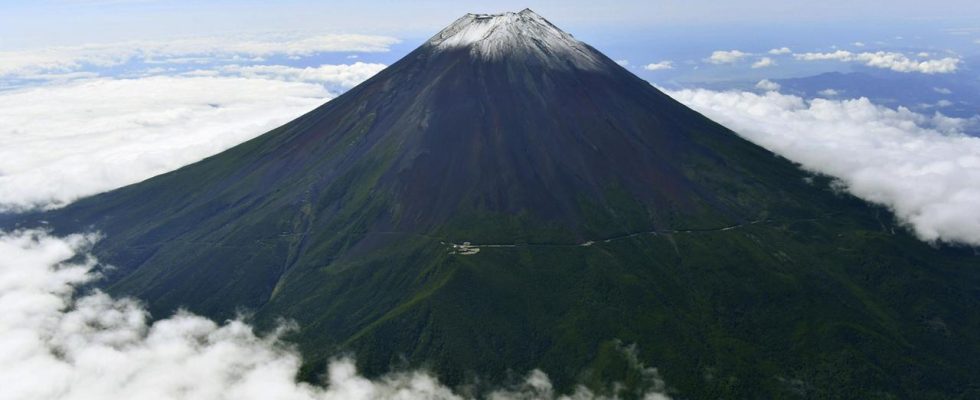report
The season for climbing Mount Fuji in Japan has started. A rush of visitors is expected – also because there are no longer any corona measures. The authorities are concerned about the many hikers.
It’s pouring rain. It’s windy, foggy – cold and wet and just uncomfortable. And yet they exist. The tough ones, the maybe a little crazy, like Theo from Brittany, who hikes with his three friends and says: “The best experience of my life.”
A completely soaked jacket, the rain dripping from the tips of your hair onto your nose: frozen through, but happy nonetheless. By noon on the very first day of the season, Theo and his group made it: up Japan’s highest mountain and down again. “We’re up early. Take a taxi to base camp. Then we’re up the Yoshida trail,” he says. It was not easy at high altitude. But they would have had enough food with them to make it to the top in the cold.
Arriving at the almost 3800 meter high summit, the young French didn’t last ten minutes. It was just too cold. And there wasn’t a nice view on this rainy day either. The main thing is that they were once on the sacred mountain of Japan.
The moment for which the ascent is worthwhile: Sunrise over Mount Fuji.
Careless hikers in sandals and shorts
Toshiaki Kasai explains that they don’t really want these adventurous people here. He is a department head at the responsible office for tourism in the region around Mount Fuji. They expect a record rush in the first year without any corona measures: more than 300,000 hikers in just over two months of the summer season. Not all are professional.
“Some visitors come in shorts and sandals. The ascent can be steep and heat strokes can occur in July due to the heat,” says Kasai, emphasizing the importance of preparation.
Day trips are explicitly discouraged. Bright yellow warning notices are also distributed, warning of altitude sickness, hypothermia, overcrowding and falling rocks in the dark.
Not all hikers are well prepared for the weather conditions during the climb.
Proper preparation is time-consuming
Shoto and his buddy from Kyushu, Japan’s southwestern island, do it in an exemplary manner. “As a Japanese-born man, I definitely want to climb Mount Fuji. That’s why I’m here,” says Shoto. You have booked a place to stay in one of the huts, take two days and have thought of everything else.
The preparations took a long time, he says. “I bought shoes and rain protection and climbed a few smaller mountains for exercise, also to train strength and endurance.”
Garbage problems and lack of beds at Mount Fuji
But it is not that easy to get accommodation on the mountain. There are only around 2000 beds along the popular Yoshida Trail. But when an average of 4,000 mountaineers a day want to reach the summit, things get tight. The calls to limit the number of hikers are getting louder, as Toshiaki Kasai knows: “Anyone is free to climb a mountain, it’s a public path. That’s the law.”
That is why it is so difficult to set an upper limit. At the moment, the only option is to speak to hikers and warn them of the dangers. This also includes admonishing them to take their rubbish with them. Because that’s the biggest problem at Fuji, along with overcrowding and security issues.
Volunteers walk the paths again and again and collect the rubbish. Also so that the sacred mountain retains its status as a UNESCO World Heritage Site.
By the way, Theo and his French friends want to come back. And then stay the night to take it easy. But first, they’re just looking forward to a feeling even greater than standing at the top of Mount Fuji: a warm shower.

